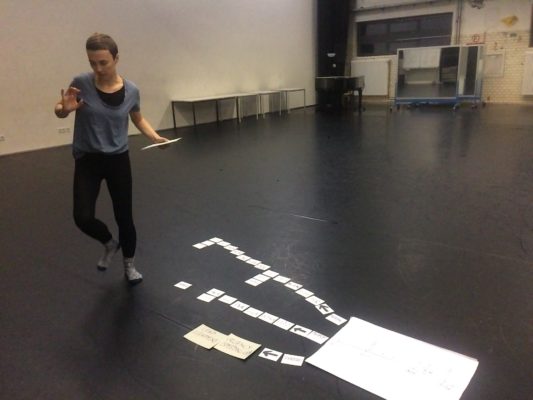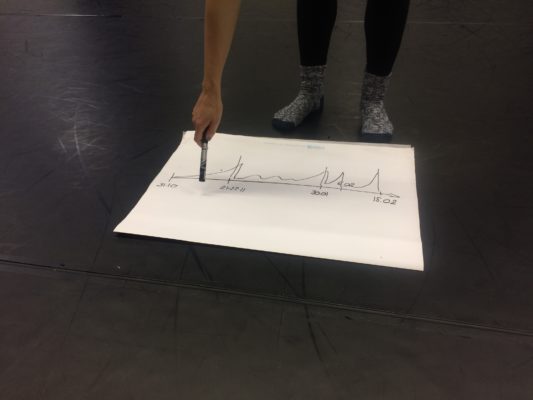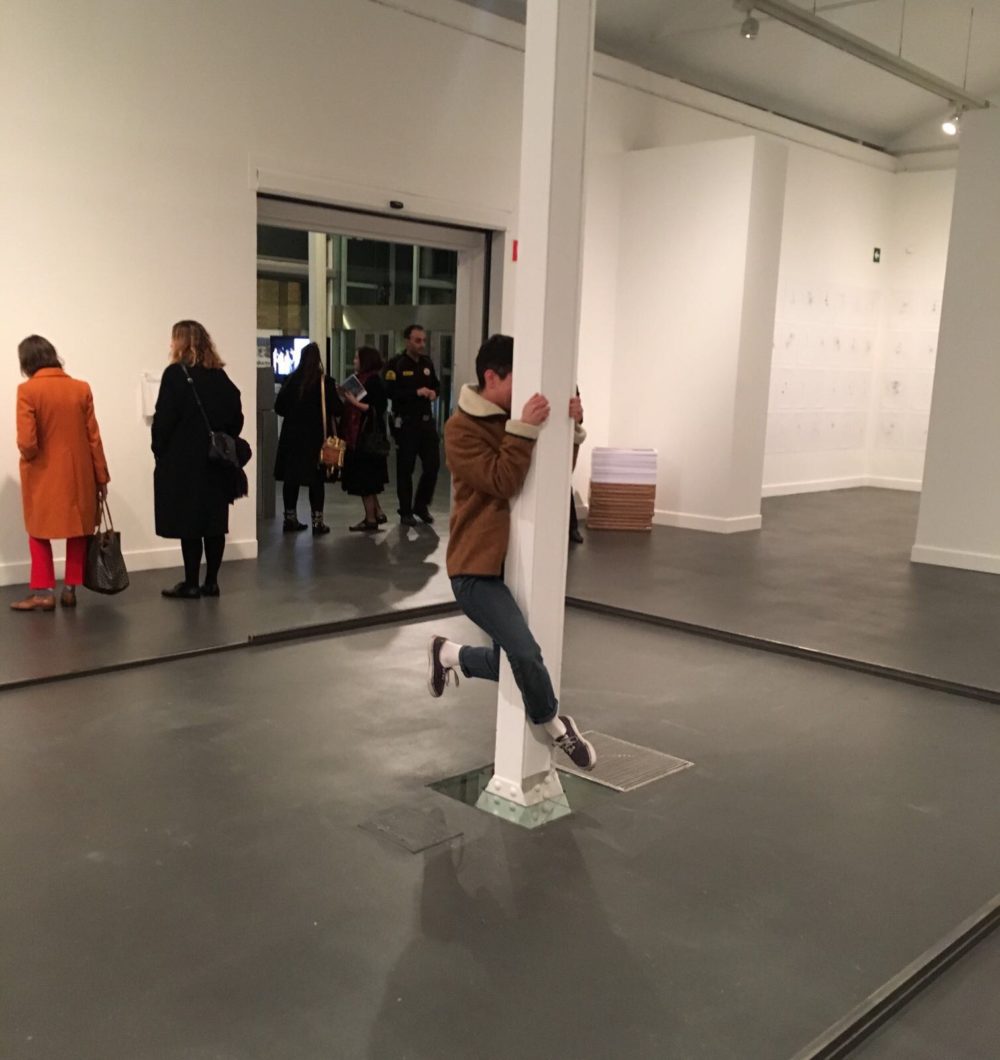Search
To search for an exact match, type the word or phrase you want in quotation marks.
A*DESK has been offering since 2002 contents about criticism and contemporary art. A*DESK has become consolidated thanks to all those who have believed in the project, all those who have followed us, debating, participating and collaborating. Many people have collaborated with A*DESK, and continue to do so. Their efforts, knowledge and belief in the project are what make it grow internationally. At A*DESK we have also generated work for over one hundred professionals in culture, from small collaborations with reviews and classes, to more prolonged and intense collaborations.
At A*DESK we believe in the need for free and universal access to culture and knowledge. We want to carry on being independent, remaining open to more ideas and opinions. If you believe in A*DESK, we need your backing to be able to continue. You can now participate in the project by supporting it. You can choose how much you want to contribute to the project.
You can decide how much you want to bring to the project.

My relationship with choreography has something of a rumour about it. It exists since the transmission by third parties of knowledge that I gradually acquire in a fragmentary and consciously dilettantish way. For a number of years I have been reading and listening to people who are more familiar with it than I am, and who have a direct and more continuous experience with it, either as particularly attentive choreographers, performers, dancers, playwrights, curators, programmers or spectators. In fact, on many occasions these roles overlap, proving the inoperative nature of the closed definitions alluded to by language. Practice tends to show us how our body is a convergence of different positions – at times mutually contradictory – rather than a coherent and satisfactory consequence for the ontology of concepts. And even though I don’t think my personal situation regarding contemporary choreography is very important for the discipline, it is important for me to specify it. Because of the degree of implicit authority in writing compared to speech, but above all, because choreography appeared in my life hand-in-hand with the criticism of the lack of knowledge of its genealogies and processes exercised by what has ended up becoming institutionalised in the context of the visual arts. A context to which I belong. This time language proves the dysfunctional relationship between meaning and term. The anachronism of the latter as regards the continuous updating of the former. In fact, choreography itself makes it clear when it seems to introduce itself, not without frictions, into the visual arts. Yet can this statement, which appears to be easy to make in our context, also be made in the context of choreography?
If I think of my relationship with choreography, I find it inevitable to mention (again) Ania Nowak. Our bodies met in Berlin in 2012, just before documenta 13 came to a close. Years later, thanks to her, I was able to learn how a choreographic project develops as I accompanied her during the process that led to Matters of TouchIf I think of my relationship with choreography, I find it inevitable to mention (again) Ania Nowak. Our bodies met in Berlin in 2012, just before documenta 13 came to a close. Years later, thanks to her, I was able to learn how a choreographic project develops as I accompanied her during the process that led to Matters of Touch2.
But it was after our first meeting that choreography began to be a regular term in many conversations on art, particularly thanks to the proposal made by Tino Sehgal at that documenta, an artist who has probably received so much praise in the context of the visual arts on account of his intelligent appropriation of one of the fetishes of Conceptual Art, the document, giving the audience the responsibility of documenting his works. Here, the ban acts as a trigger of desire. And the performance acts as a new empirical return of the audience, imprisoned in theory, despite attempts to emancipate it. The audience, however, doesn’t seem to need to re-emerge in the field of choreography because it is present during its processes, not only during its results, as I learnt from conversations with Ania Nowak while we were preparing Matters of Touch last year. Or as proved by the fact that it is especially mentioned in the credits of Post-Dance, a book that self-assuredly celebrates the homonymous encounter that made it possible in Stockholm in 2015. In fact, some of its texts form a part of these rumours that lie at the base of my fragmentary knowledge of choreography. However, as regards the bodies that shaped Post-Dance and the names that appear in its publication, I can’t help thinking of Ana Vujanović when she says that ‘the space of art isn’t only determined by what it includes, but also, or even more, by what it excludes’.
Since then, the term choreography has become a habitual concept in the narrative of art. In its official dimension, but also in the internal jokes that surfaced during conversations decentred on other issues. Choreographing foreign expectations, choreographing exhibitions, choreographing breakfasts, choreographing desires, worries, lies. Choreographing rumours, information or situations of invisibility, as in the case of Simon Asencio. Choreographing molecules, tectonic movements or the biosphere, as Agata Siniarska does in Hyperdance. Performance art has also become an important part of today’s contemporary art agenda. It appears at the openings to many exhibitions and even during the time they remain open. Halfway between an independent entity and a strategic incentive to deactivate the laziness derived from our continuous access to the world through the Internet and its metamorphosis of spectators into digital voyeurs, performance art appears to be an answer to activate the transitoriness, also ephemeral, of the white cube. Or an excuse to replace the academic shield of the third person with the narrative vulnerability of the first person in the lectures. It also seems to be the condition of possibility for a coming together from the singularities – not individualities – of the idiorhythm proposed by Barthes. However, in a world in which performance is also a characteristic of the neo-liberal subjectivity of the creative class that also appears when we form a part of the audience of choreography, which is not foreign to the continuous dynamics and demands of networking, what is it that makes today’s performance art so different, so appealing?
When I told Ania that I was going to write an essay on choreography – or, at least, that I was going to try to write it, despite the advice of a certain German philosopher to avoid speaking of things we know nothing about – she remarked that I could perhaps do it without mentioning the usual suspects of performance and choreography. I admit that this is something that I would have very much liked to do, but I feel that in order to be able to, I would need direct knowledge that I don’t yet have of many experiences connected to it. Direct knowledge derived from participation in the present, instead of subsequent attempts to represent something that has taken place and cannot be repeated. At least, not in the way in which bodies inhabit the present. I understand too that the continuous mediation and pre-recorded broadcast of choreography through various bodies, human and non-human, is a part of its experience. However, the transient and unrepeatable nature of the event also forms a part of the aesthetic experience of the visual arts. No encounter is like any other, even if the elements that take part in it are the same. Furthermore, very often the works or projects we like best have been narrated by third parties. Perhaps because they introduce the feelings and subjective experience of whoever is relating them to us, feelings that are not welcome, and are sometimes even removed, from official discourses and historiography. Perhaps this continuous and anticipated worry about what the people who form a part of the audience feel, or how they feel, could be one of the significant differences between both contexts, although I personally believe that the relationship between the VAC (Visual Art Context) and the PAC (Performance Art Context)3 still insists on a dialectical competition in which certain arguments prove the superiority of the one over the other. But can there be a horizontal relationship between two contexts of artistic production that don’t have the same conditions of possibility? Can there be a relationship between two elements that doesn’t end up with one being digested by the other? Can there be a relationship based on the permanence of a transitory movement and not on the transitoriness of strategic belonging?

Agata Siniarska during rehearsal at Hufer Studios, Berlin, 2017. Photo: Sonia Fernández Pan.
When I say that I would have preferred not to have had to resort to usual referents, I’m thinking of Andrè Lepecki or of Mårten Spångberg. And I ask myself – rhetorically – how is it that in a field of artistic production in which I am discovering more women than men, the authority of the discourse should still belong to them. Or that the discourse still commands so much authority even when the bodies try to transcend it, free themselves from it or use it without the usual hierarchies with which we think of the body, often dissociated from the mind, which is one of the great fictions of our culture. Because this mind asks us for a body that doesn’t suffer from anxiety, that isn’t prone to menstrual pain or doesn’t somatise all the malaise produced by the system in which we live. It works, like choreography, as a technology of control over the body. Over the bodies. Choreography, as Lepecki tells us, is another product of modernity and its rational scrutiny. It’s a technology of control over movement. It emerges thanks to the anchoring of dance within the state apparatus – then the court of Louis XIV – to continue developing today through choreo-police and choreo-politics. Power and resistance to power as choreographic entities that work in similar ways. The order ‘Move on’, ‘Move on’ and the slogan ‘They won’t move us’ as parts of the same structure. Or the extremely organised nature of Lepecki’s discourse, that greatly resembles that of Foucault. I think it could be on account of this narrative similarity in their thinking that the former seduces us as much as the latter.
The confusion between choreography, dance and performance is something that I also practice when I refer to them. Lacking – and wanting – other referents to understand the nuances and differences, I turn here to Spångberg. According to him, choreography is a structural and therefore abstract question. It’s the organisation of movement. In this sense, dance is merely one of the many forms of expression of choreography and can exist without necessarily being linked to it. And while performance is a subject performing subjectivity, dance is a subject performing form. This connection of performance with policies of identity could be one of the reasons that make it much more present than dance in what we call the visual arts, especially bearing in mind the necessary (though sometimes stifling) reference to our place of enunciation when we take a stance before others. And perhaps the fact that dance can exist without a previous organisation, liberated from choreography, leads many people to relate to it without being aware of the fact. On a dance floor, for instance, when it is music that organises movement without any need for previous instructions or signs. Following Alina Popa, if we think of the social structure of art and its relations as one of the main media of aesthetic work, then the divisions between contexts could prove meaningless as we all partake in a given (choreographic?) structure where we move more or less freely, understanding freedom not so much from the point of view of individual autonomy as from a strong awareness of the structures of power and our capacity for acting within them and with respect to them.
In many essays I’ve read on choreography, performance and dance, I find dissatisfaction with the visual arts. Sometimes it is obvious, at other times it seems to breathe between the lines or between the silences in conversation. I admit that as a result of this dissatisfaction, almost without realising I form a part of this dialectics (and of these comparisons I wanted to avoid) that is easier to combat in theory than in practice. Precisely because it lives and expands through our bodies. I note how arguments in favour of the visual arts when it is ‘others’ and not ‘us’ who challenge or criticise them suddenly spring to mind. One of the most frequent criticisms concerns the lack of knowledge of the genealogy of performance or choreography, whose history goes back a long way and is filled with experiments and intersections with other disciplines, including the visual arts. Another is the assimilation between visual arts and the art market, a symbiosis that doesn’t work in all artistic contexts, as they do not form a unitary whole as regards particularities and dynamics. Similarly, the international interpretation often made of dance – and perhaps, by extension, of choreography – calling for the writing of local (Eastern European) histories and seeking its most characteristic features in order to avoid making the contemporary synonymous with a term as imperfect as universal isn’t valid for Ana Vujanović. Mateusz Szymanówka also questions Polish identity in the dance context, and concludes that if there is a Polish specificity in dance, it doesn’t lie in a history or style of its own but in the determinants of its production — its small budgets and the fact that it is often produced outside its presumed country of origin. The concern regarding the ‘exotic quota’ that appears in the tension between the international and the local – the unique nature of the former as opposed to the plural, unstable nature of the latter – exists in the actual contexts of artistic production but also in the forms of relation between them. To return to the idea of the shift of choreography towards contemporary art, Alina Popa draws our attention to the assessment of the specificity of the performance medium over and above its exotic attraction in other contexts. The question that arises now is can choreography survive outside of its supposed habitat as it needs to be? To which we could add other questions, such as is there any use in continuing to think of artistic disciplines from the point of view of contextual essentialisms? Perhaps experimentation and the bad reputation it has nowadays could find a new raison d’être not only in how we do things, but in where we do them. Avoiding the danger of the change in context accounting for more than half of the work. But could the opposite occur? Could there be a shift from the visual arts towards choreography? Moreover, could the relationship between host and guest not only be altered but also exchanged for another type of relationship?

artwriter_curator_esnorquelmaker_chocolateresearcher_technodancer__bikeenthusiast_coffeeaddicted_
"A desk is a dangerous place from which to watch the world" (John Le Carré)